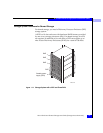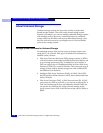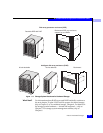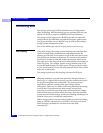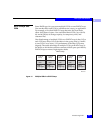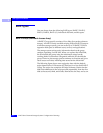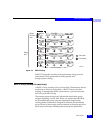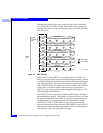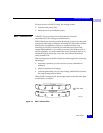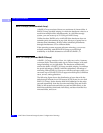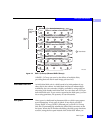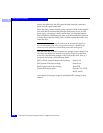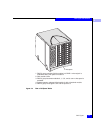
2
2-4
EMC Fibre Channel Storage-System Configuration Planning
RAID Types and Tradeoffs
RAID Types
You can choose from the following RAID types: RAID 5, RAID 3,
RAID 1, RAID 0, RAID 1/0, individual disk unit, and hot spare.
RAID 5 Group (Individual Access Array)
A RAID 5 Group usually consists of five disks (but can have three to
sixteen). A RAID 5 Group uses disk striping. With a RAID 5 Group on
a full-fibre storage system, you can create up to 32 RAID 5 LUNs to
apportion disk space to different users, servers, and applications.
The storage system writes parity information that lets the group
continue operating if a disk fails. When you replace the failed disk,
the SP rebuilds the group using the information stored on the
working disks. Performance is degraded while the SP rebuilds the
group. However, the storage system continues to function and gives
users access to all data, including data stored on the failed disk.
The following figure shows user and parity data with the default
stripe element size of 128 sectors (65,536 bytes) in a five-disk RAID 5
Group. The stripe size comprises all stripe elements. Notice that the
disk block addresses in the stripe proceed sequentially from the first
disk to the second, third, and fourth, then back to the first, and so on.




